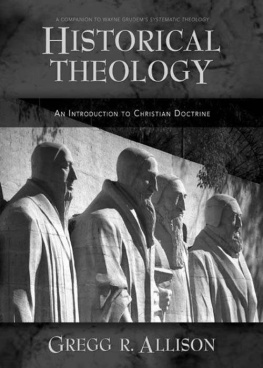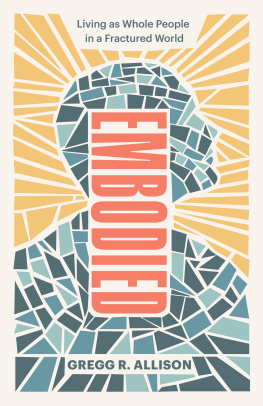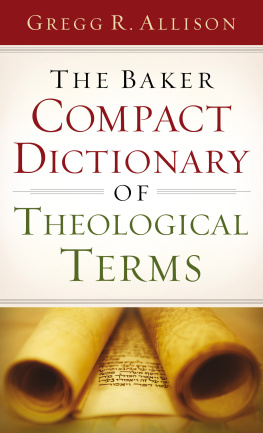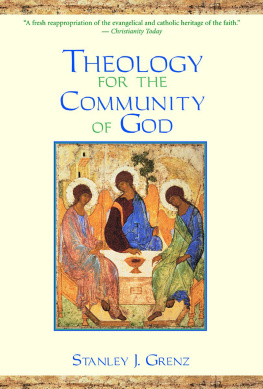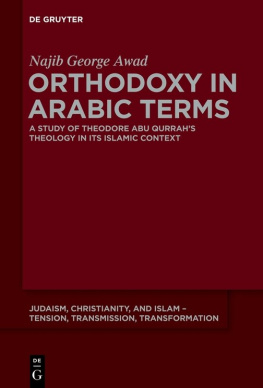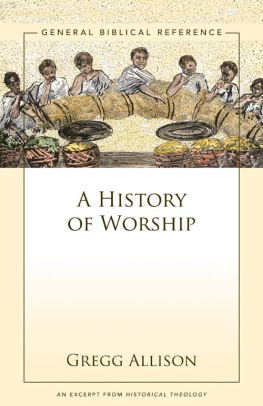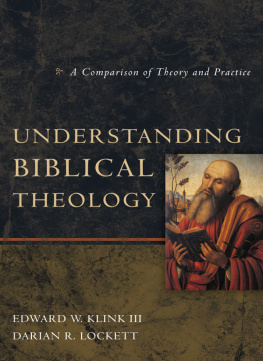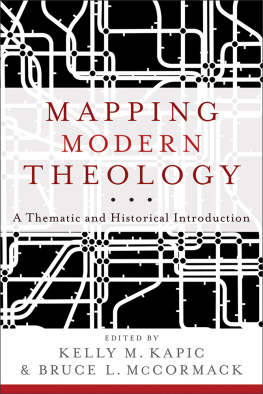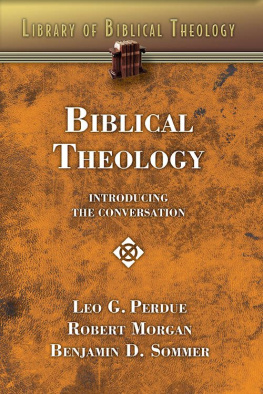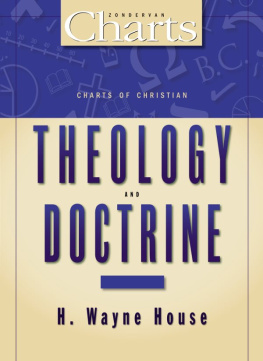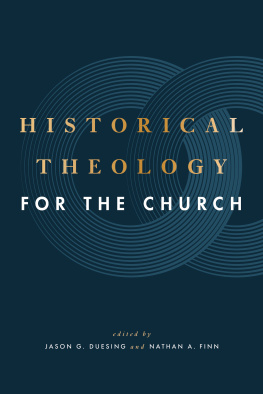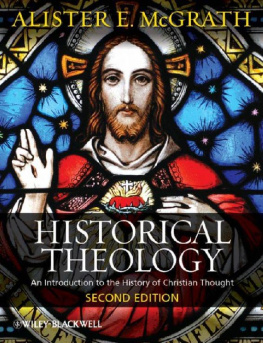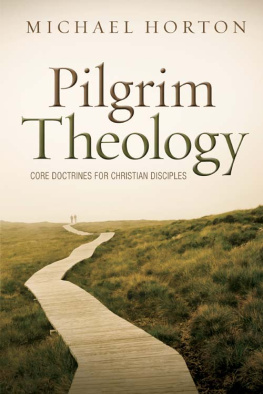G REGG R. A LLISON
This book is dedicated to my three children,
whom God gave to my wife, Nora, and me
Lauren Marie Schneringer,
Hanell Joy Schuetz,
and Luke Winford Allison
three wonderful blessings in my life
as I was writing this book.
As committed followers of Jesus Christ,
you are heirs to the evangelical legacy
described in the following pages,
members of the great company of saints
whose study of Scripture, careful thinking,
fight against heresy, prayer,
worship, perseverance in the truth,
love for Christ, labor in the church,
and yielding to the Holy Spirit
led to the development of the evangelical doctrines
that you now embrace, and that embrace you.
May you follow the way of this truth throughout your life
until you go to be with Jesus, or he comes for his church
redeemed by the One who is the Way, the Truth, and the Life.
Contents
This book is an amazingly rich resource that traces the development of thirty-two major doctrines from the time of the New Testament to writers in the present day. Every chapter provides a fascinating story that is hard to put down because it shows how God has worked in Christians lives over the centuries to allow one heresy after another to challenge the church, then to raise up courageous, wise teachers and writers to respond to the wrong teaching with a new and deeper understanding of Scripture, resulting in even stronger faith in God and his Word. Therefore this book is the story of how the Holy Spirit has guided and protected the people of God over many centuries, and how he is still doing so today.
Christians tend to make two mistakes when thinking about church history. The first mistake is to ignore it or think it unimportant. This view forgets that the Holy Spirit has been working in the church throughout the centuries to gift shepherds and teachers (Eph. 4:11) so that they would guide and teach the church. Gregg Allison quotes extensively from these gifted teachers that God raised up in every generation and shows how we can still learn a great deal from them today.
The second mistake is to idolize church history, or at least some part of it. I have met Christians who seem to think that there was some golden age of doctrinal understanding long ago, and our task today should be simply to get back to that understanding of the past, such as the views of the early church Fathers, or the early creeds of the church, or Augustine, or Luther, or Calvin, or the Puritans, or Wesley. But this view can neglect the fact that our only perfect source of doctrine is the Bible itself, and no one in history has understood it perfectly. Rather, Christ has been working in the church throughout the centuries to sanctify it, so that at the end he might present the church to himself in splendor, without spot or wrinkle or any such thing, that she might be holy and without blemish (Eph. 5:2627). The history that this book traces is a history of the Christian church gradually growing in understanding, making progress toward the goal that we may no longer be children, tossed to and fro by the waves and carried about by every wind of doctrine, but by speaking the truth in love we may grow up in every way into him who is the head, into Christ (Eph. 4: 1415).
Gregg Allison is one of the wisest, most articulate, and most knowledgeable theologians in the church today, and this is evident throughout this book. He is also a humble, godly man whose life adorns (Titus 2:10) the doctrine he teaches, and it is my privilege to count him as a friend. I am grateful that he wrote this book to be used alongside my Systematic Theology (as a supplement and sometimes a needed corrective to my brief historical summaries), and I am sure that his book will also find wide usefulness as a resource by itself. It is a privilege for me to commend this wonderful book for the strengthening of the church throughout the world.
Wayne Grudem, Ph.D.
Research Professor of Theology and Biblical Studies
Phoenix Seminary, Phoenix, Arizona, USA
This book is intended to be a companion volume to Wayne Grudems Systematic Theology: An Introduction to Biblical Doctrine (Grand Rapids: Zondervan, 1994, 2000). Indeed, it was Wayne who called me one day with a proposal and a purpose: to write a book that would trace the development of the doctrines that his book covers, to help Christians understand how they have come to have the beliefs they have today. I did not realize at the time how daunting a task this project would be; at times I have been overwhelmed by the sense that no one person should have undertaken to accomplish it. Now, over a dozen years later, I am thankful to God (and Wayne) that I can present this book to you. Although it is a companion volume, my Historical Theology can be read on its own. Still, to receive the maximum benefit, it should be read in tandem with his Systematic Theology. One helpful plan would be to read his chapter on, for example, the Trinity and then read the corresponding chapter in my book to understand how that doctrine developed in the church over the course of time.
Like Grudems Systematic Theology, my Historical Theology was not written for teachers of historical theology and church history, but for students and for all Christians who desire to know how the church has come to believe what it believes today. As such, I have called it An Introduction to the Development of Christian Doctrine. Entire books have been written about the progression of, for example, the inspiration of Scripture or justification, but this book is intended for Christians who have never studied such evolvement of doctrine. I have tried to recount this development in an understandable way by avoiding the use of technical terms without first explaining them, and by providing helpful glossaries of the people, writings, and events frequently encountered in the book. My hope is that the church, and evangelicals in particular, will become as familiar with the giants of the pastClement of Rome, Justin Martyr, Irenaeus, Augustine, Thomas Aquinas, Martin Luther, Huldrych Zwingli, John Calvin, John Wesley, Karl Barthas they are with Billy Graham, John Piper, J. I. Packer, Chuck Colson, Ravi Zacharias, Tim Keller, Al Mohler, and Mark Driscoll.
Several distinctive features have guided me as I have written Historical Theology:
1. Present Each Doctrine in Its Chronological Development.
Unlike the vast majority of other historical theology and church history books, which are organized chronologically, my book is organized topically. An example of the common approach is Jaroslav Pelikans five-volume masterpiece, The Christian Tradition: A History of the Development of Doctrine.covers the development of Eastern Orthodoxy, from 600 to 1700; the third volume covers the medieval church, from 600 to 1300; the fourth volume covers Reformation developments, from 1300 to 1700; and the fifth volume covers the modern period, from 1700 to the present. Within each time period, the various doctrines and their development are treated. Accordingly, to understand the progression of the doctrines of, for example, the inerrancy of Scripture and the person of Jesus Christ, readers must track down those specific topics in each of the five volumes. This approach requires a fair bit of effort, first, to identify where the doctrine of Scripture and the doctrine of Christ are covered in each volume, and second, to read their entire coverage throughout five volumes.

